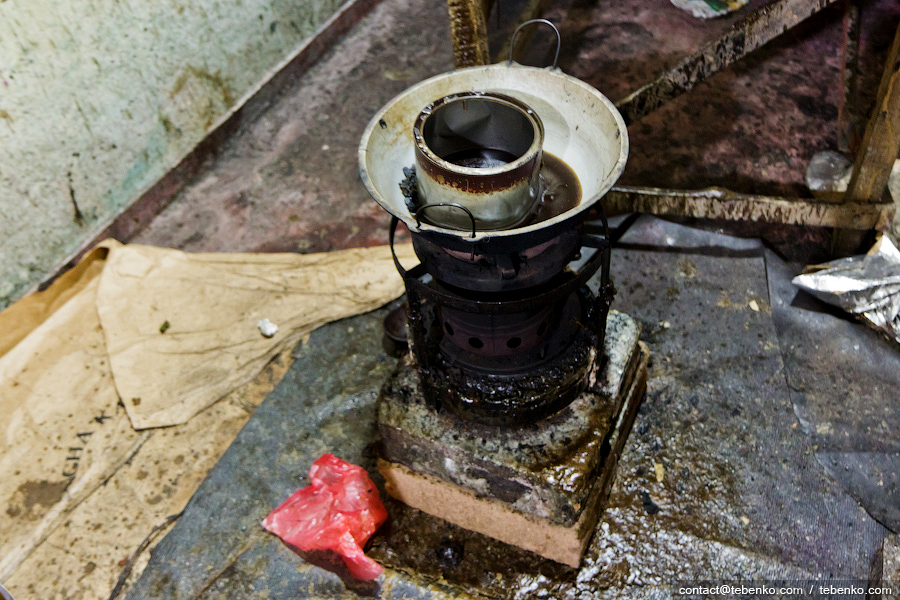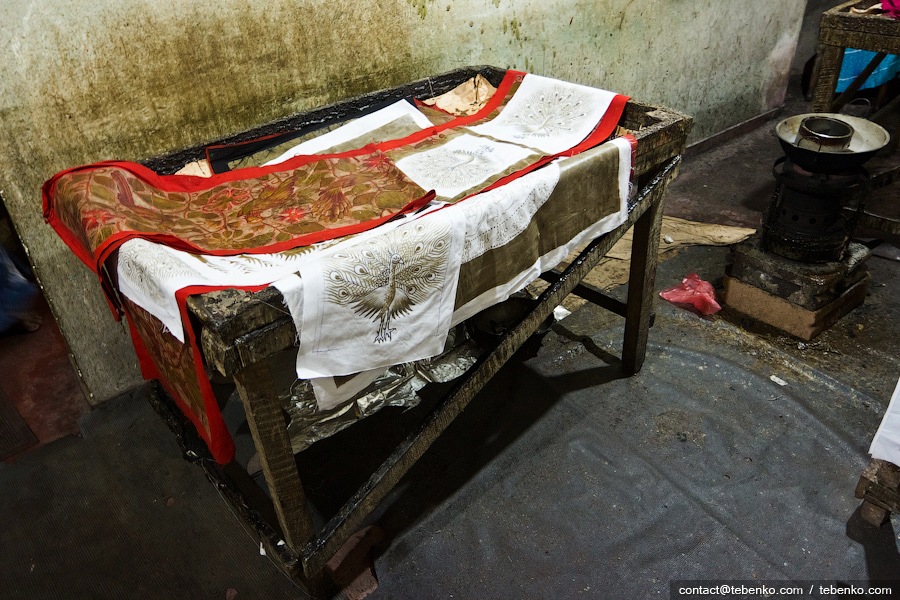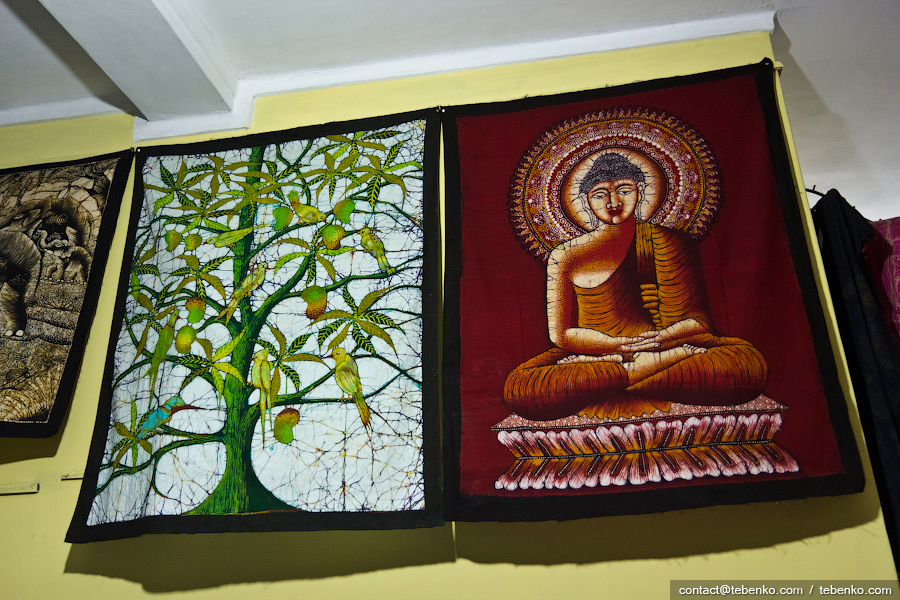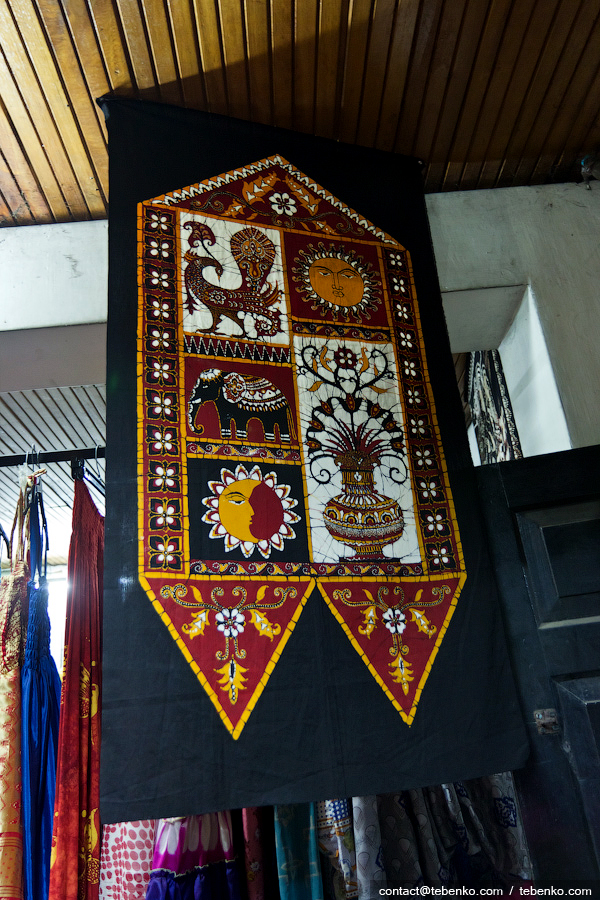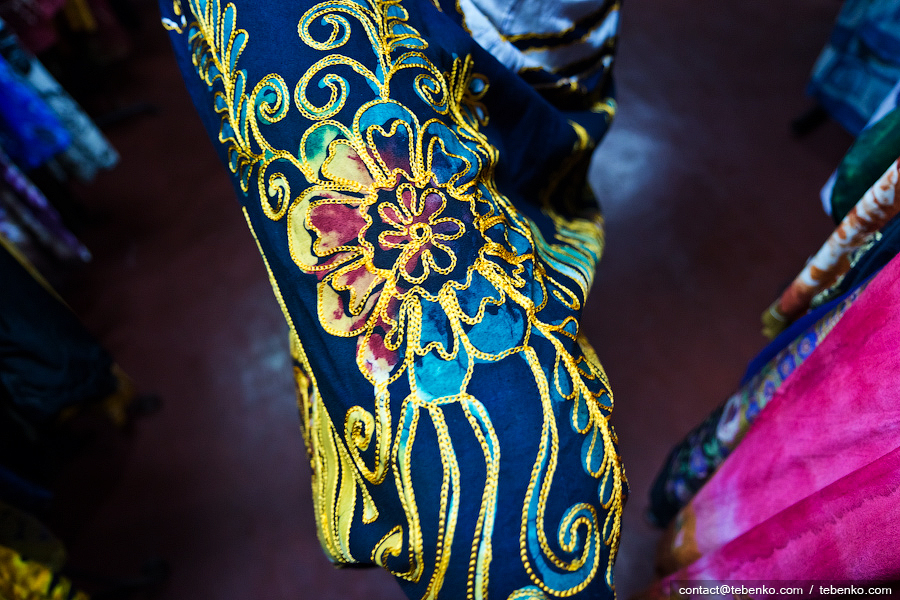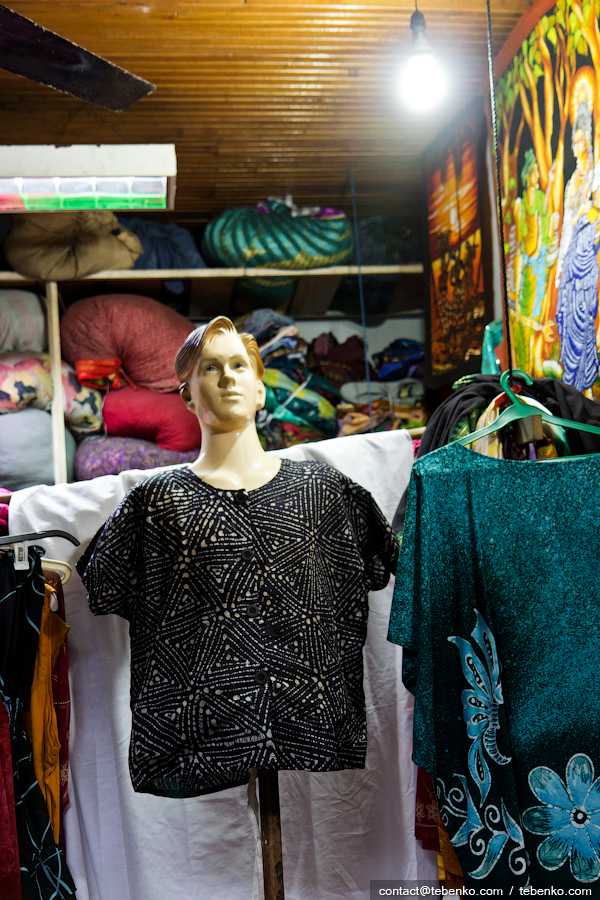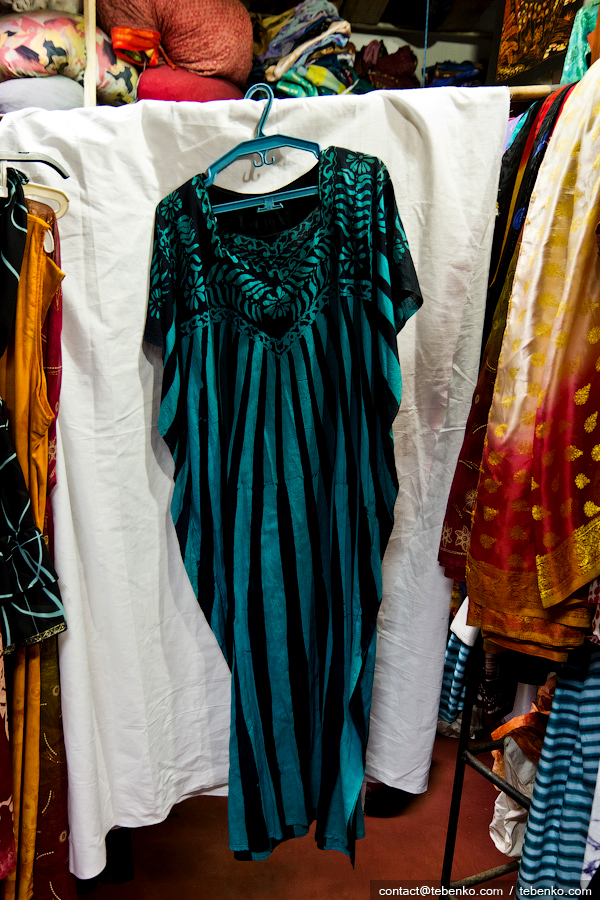Another object of our research Lankan folk today will batik. The word “Batik” is one of the promoted trade brand of tea, but in our case it will be about another batik — techniques of painting on fabric using wax and dyes.
For the right to be called the birthplace of batik has long been arguing Egypt, India, China and Indonesia. Given that most ancient (V century BC), the famous batik designs found in Egypt, Indonesia has some advantage in dispute, since the word “batik” — Indonesian origin (literally means “drop of wax”) and, possibly, that it is from this country batik first came to Europe thanks to the valiant efforts of Dutch sailors.
Although batik made in many countries, production has not reached such mastery as in Southeast Asia, including Sri Lanka.
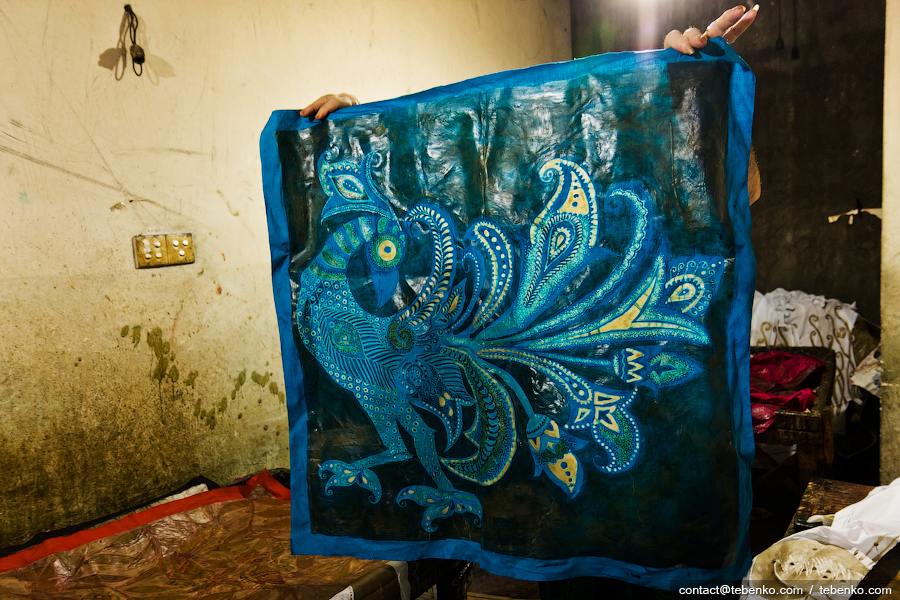 1
1There are several ways to produce batik — knot, “hot” and “cold” batik. Most traditional batik is hot when melted wax is applied to the sketch. Covered with wax seats do not absorb paint and limit its spread.
Making batik — one of the most popular topics on the island. On sheets of different size paint as in tourist areas and in remote corners. Usually it is a family business, and production can sit in a small room, which you can proudly call “factory for the production of batik”:
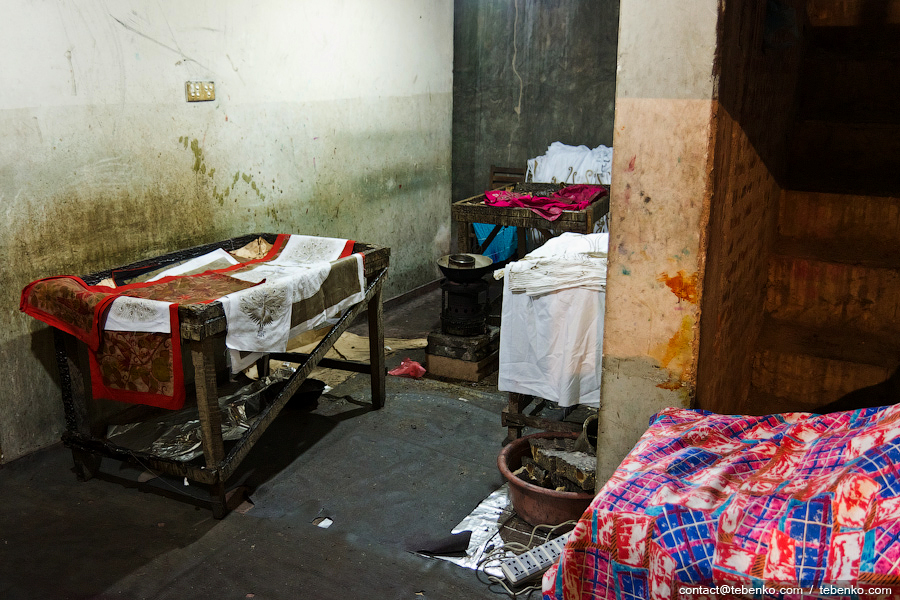 2
2Great investment business does not require the necessary equipment can be found in any of the average home. The only thing that will have to purchase, this paints and materials:
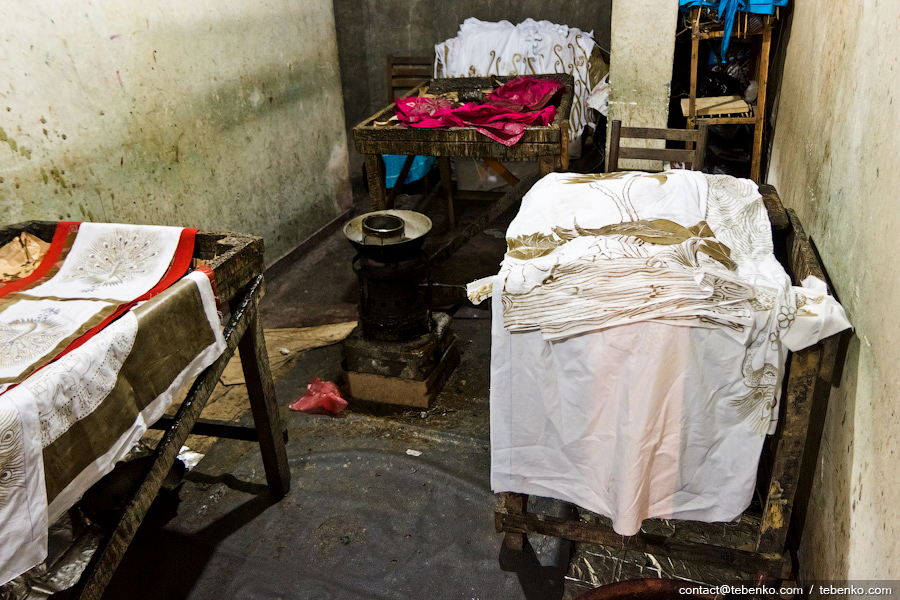 3
3Production technology is very laborious and time-consuming. Long before drawing sketch cloth carefully treated to give it elasticity and smoothness, then — nakrohmalyuyut wax for easier removal in the future. After moving stage preparatory work to drawing the sketch:
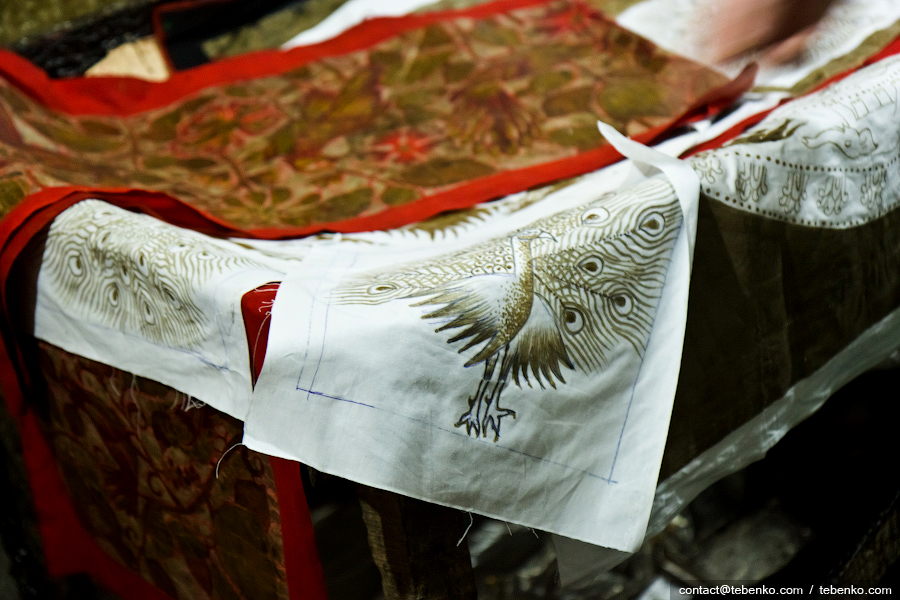 4
4Then, using a special tool, chantinhu, wax sketched places that should not be painted over. All fabric ready for their first dive.
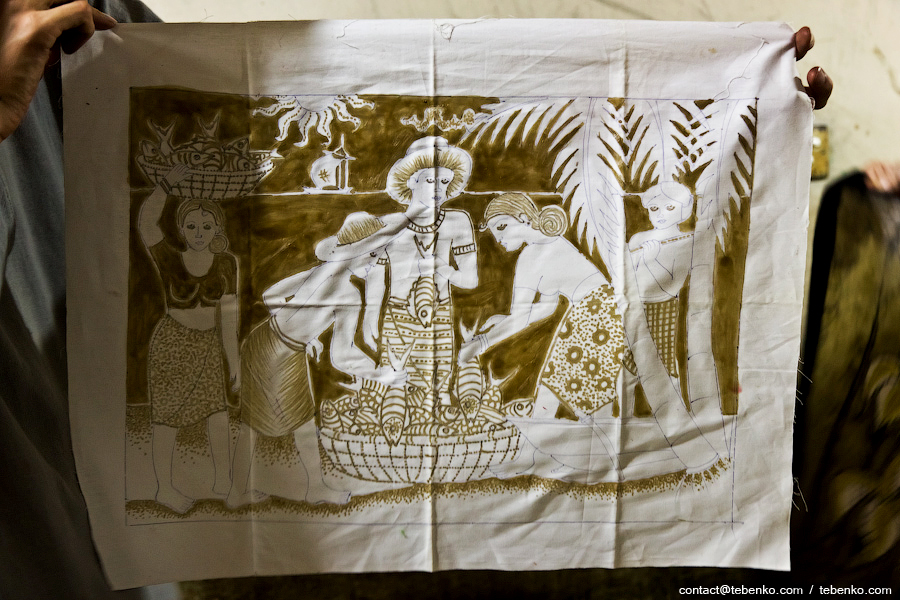 6
6If the dive went well, wax covered the following piece of the picture, and then again cloth dipped in paint:
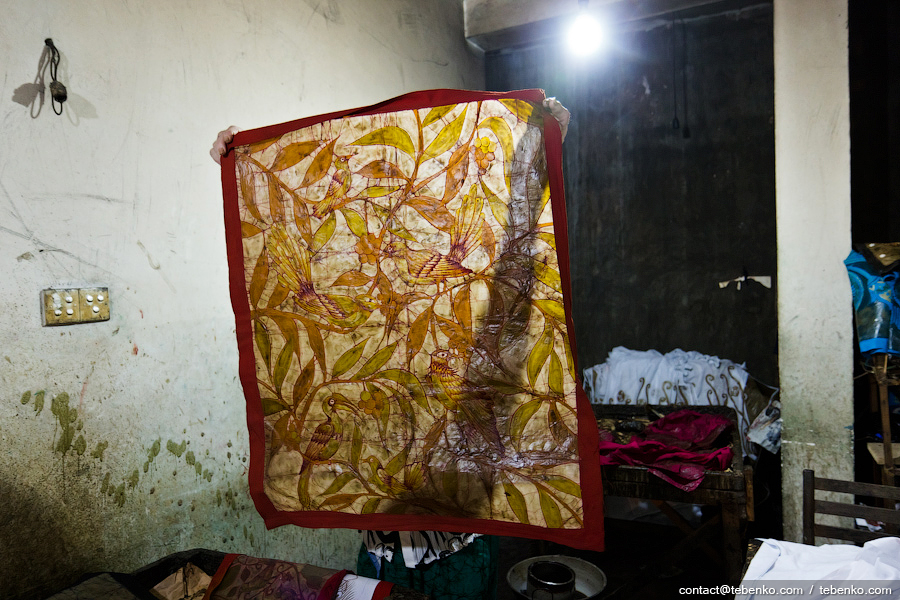 7
7The process is repeated until the desired result is achieved. Particularly complex drawings immerse in the paint to bluish same manufacturer:
 8
8Remembering that repetition — is the mother of torment, secure knowledge. Draw a sketch, if possible — a good pre introduce the necessary colors to paint over the tissue desired color (color is in colors from light colors to dark), sketched areas that do not need paint, drop cloth in the following paint, sketched necessary places repeat the process as many times as necessary. The final phase — the amount of production costs multiplied by 3.4, then look for fair-skinned tourists and trying to sell him batik.
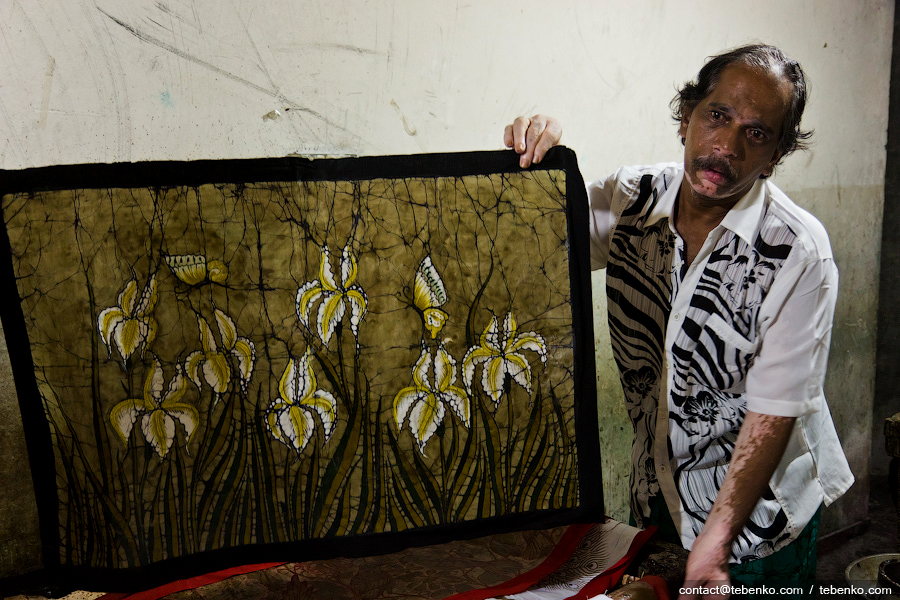 9
9The work is really challenging and painstaking because often it involved women. However, in this particular case it was a man:
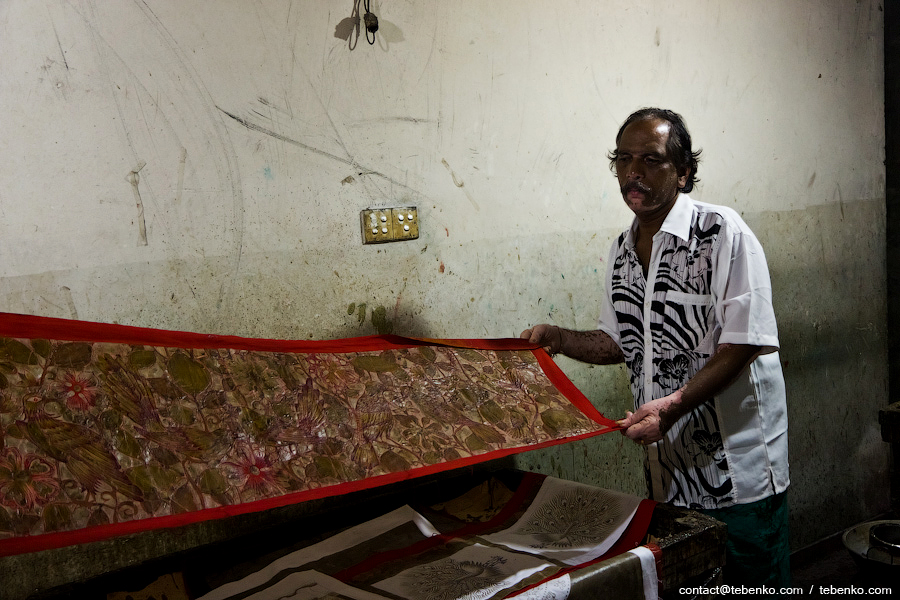 10
10In paintings in some places you can buy and colorful local costumes, they are sometimes also sewn from batik:
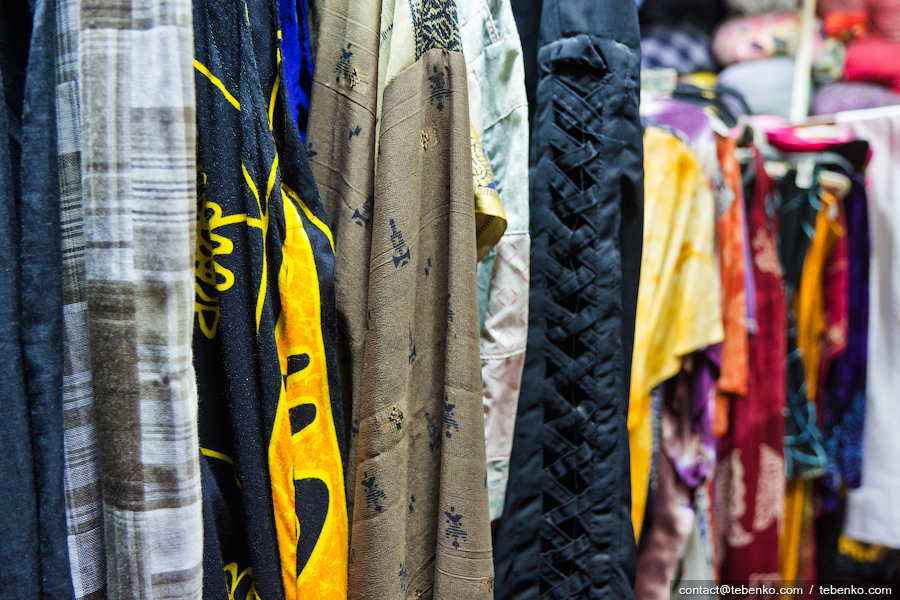 15
15By the way, a clothing store can not only buy, but also patch. The cost of batik — a relative term and related to your ability to bargain. Although we have not met canvases $10 cheaper.

